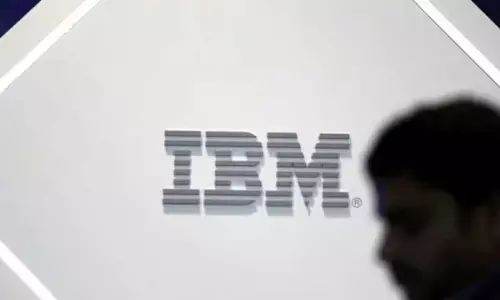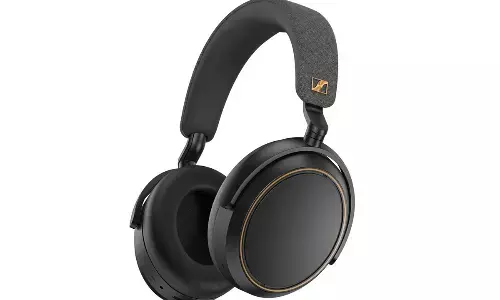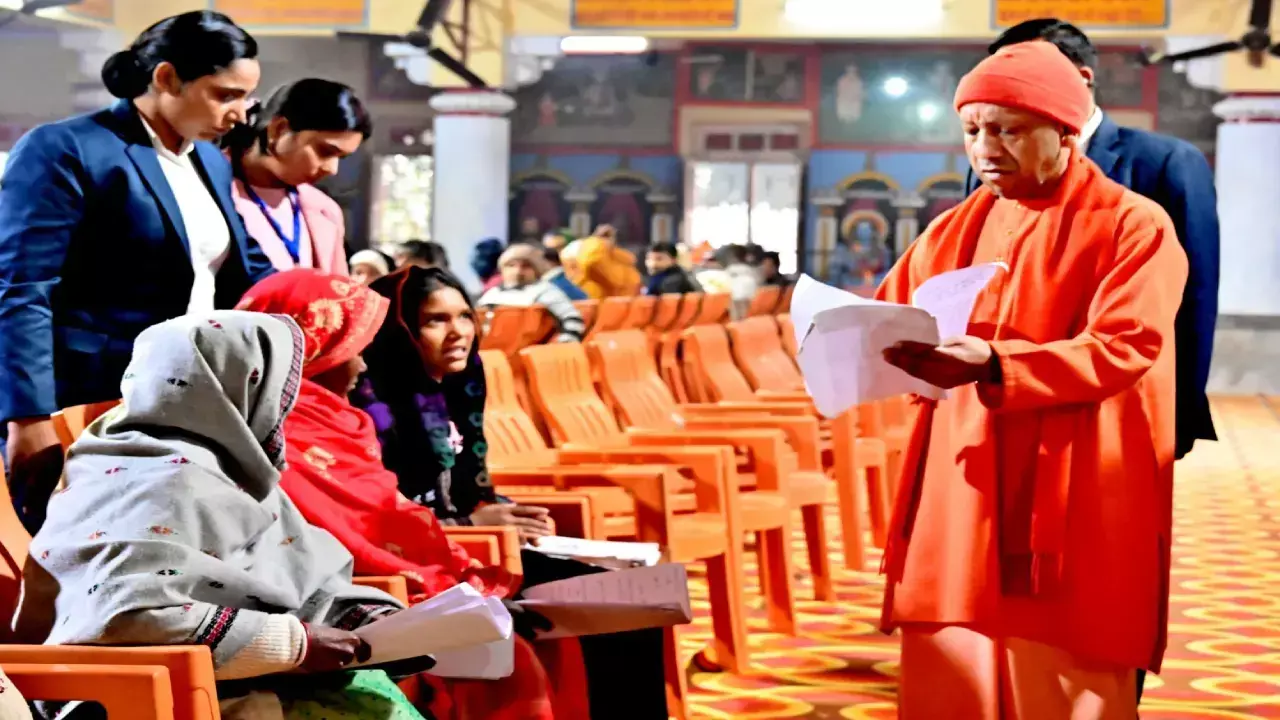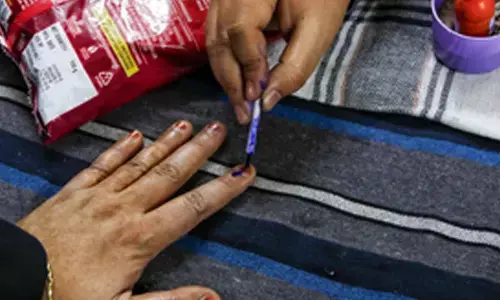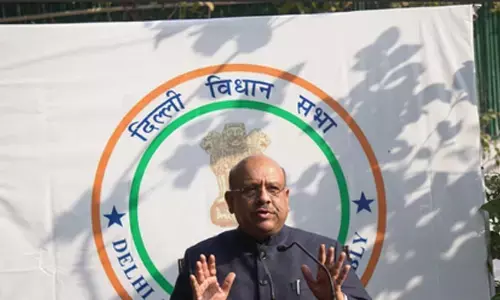Chak De, India!
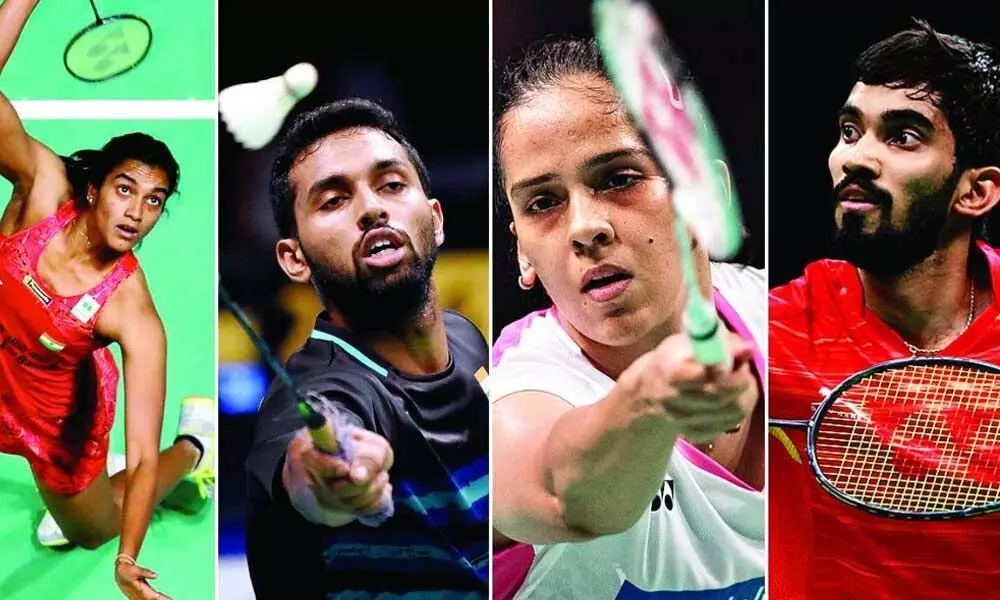
Chak De, India!
All fretting and no frolicking, since the dawn of 2020, made all of us ill and dull. After being brutally battered by coronavirus, the entire human race has something to cheer about: the 32nd Summer Olympics will commence in Tokyo on July 23
All fretting and no frolicking, since the dawn of 2020, made all of us ill and dull. After being brutally battered by coronavirus, the entire human race has something to cheer about: the 32nd Summer Olympics will commence in Tokyo on July 23. The greatest sports showpiece on earth that enthralls till August 8 is bound to reawaken us from our days of terrible gloom. Incidentally, amid the air of melancholy surrounded the globe, the Olympic Games motto-Citius-Altius-Fortius (Faster-Higher-Stronger) will have an immense never-before-felt relevance, this time around.
Well then, let us recover faster, fly to a higher happier state and become stronger to bounce back to good old days after conquering the biggest global health crisis of the 21st century.
More than a hundred billion hearts are rooting for 126 Indian athletes drawn across 22 States, who all will give their best for cornering glory in 18 disciplines in the quadrennial extravaganza. The 69 cumulative events that India's largest ever contingent will participate in is the highest ever for the country.
First things first! India has a reason to start the campaign on a highly positive note. Gracenote, the world's leading entertainment data and technology company, predicted something we all should delight ourselves with. Using a statistical model, called The Gracenote Virtual Medal Table, based on individual and team results in the previous Olympics Games, World Championships and World Cups to forecast the most likely gold, silver and bronze medal winners by country, Gracenote indicated that Tokyo-2020 would be a turning point for Indian sports. It projected that India would have an unprecedented 17-medal haul and finish in the top 20 in the final medal tally! If this forecast comes true, it would, by far, be the most exhilarating show by India, which bagged a meagre 28 medals since its Olympics debut in Paris-1900. The second-most populous country, the seventh-largest country by land area, and the largest democracy in the world truly deserves a far better showing.
Despite the devastating impact of the pandemic and the impending third wave, according to a Ipsos survey that covered 28 nations, over 55 percent in India are interested in Tokyo-2020 as against 48 percent in the USA. As many as 80 percent respondents were firm that Olympics inspire tomorrow's generation to participate in sport. As the Indian contingent safely landed in Tokyo's bio-bubble, the entire nation has come together to wish for its safety and victory.
High hopes on PV Sindhu
On the top of the list on whom the country is pinning medal hopes is our very own P V Sindhu, the former World Champion and silver medalist at Rio-2016. Since her Olympic debut, she achieved a career high ranking of World No 2 and is bubbling with confidence to go in for the kill. Sindhu prepared for Olympics under a Korean trainer Park Tae Sang, after leaving her long-time coach, Pullela Gopichand, in Hyderabad. It is good to know from Park that the tall and lanky youth icon has transformed herself into a comprehensive player after strengthening her defence. In fact, Sindhu sounded very optimistic about her Olympic campaign during an interview I did for Doordarshan a few days ago. Sindhu's arch-rival Spaniard Carolina Marin opted out of the race due to an injury but local hope Akene Yamaguchi would in all probability challenge the Hyderabadi in the quarterfinals. The finest doubles pair India has produced (Satwiksairaj Rankireddy and Chirag Shetty) is also in a tremendous shape but locks horns with the toughest pairs in their group matches.
Indian badminton fans are not happy that Gopichand, for the first time in a decade, will not be around to cheer or bolster the Indian shuttlers at Olympics. I don't think it is a good augury. The architect of India's badminton ascent should have been given due respect and efforts should have been made to fix the clash of egos in the overall interest of the nation.
Hats-off Sania and Sharath
Kudos Sania Mirza (34) and Achanta Sharath Kamal (38) for igniting zeal and keeping the spark alive among at least two generations of budding Tennis and TT players respectively with their fourth appearance. It is no mean achievement, let me tell you!
We have medal prospects in shooting, wrestling, boxing and javelin throw besides hockey. Sharat Kamal and Manika Batra have a chance in TT mixed doubles. The most promising debutant Sathiyan Gnanasekaran's wish to have his coach, S Raman, the four-time national TT champion and Olympian, to be with him in Tokyo was summarily rejected by officials. The Indian government should have chipped in to include Gopichand, Raman and other coaches, who could have motivated the hopefuls and help India chalk out a plan for future editions.
The social, financial, and political hurdles crossed by the Tokyo-bound players, their parents and coaches make for an inspiring potboiler and those who wish to put their wards in sports should collect their bios for the sake of posterity. The National Sports Development Code of India-2011 grandly proclaims that 'sport is at par with public education and public health, and like them sport is a public good and sport development is a public function.' A series of avant-garde schemes, such as 'Khelo India' are necessary to give a shape to this magnanimous idea. Launched in 2017-18, Khelo India aims at reviving sports culture at the gross-root level by building a strong framework. As part of the programme, more than 700 talented short-listed players are getting an annual financial assistance of Rs 5 lakh for eight years. On the sadder, and demoralising, side, many States, especially Telangana and Andhra Pradesh, don't even have a sports policy.
To make India a sports super-power
The Narendra Modi government at the Centre, keen on bidding for Olympic Games, preferably in 2036, developing world-class infrastructure in Ahmedabad while the Delhi government, in its 2021-22 budget, announced that it aims to host the 2048 Olympics in the national capital. Though the bidding for 2036 Olympics will begin only in 2026, a proper vision and plan should be in place as early as possible. Bidding for Olympics is welcome but there is no denying that the state of country's sports leaves much to be desired.
Agreed, cricket overshadowed all other games in our country. Instead of lamenting over the most popular game's domination, why don't we emulate the best practices across the globe? China, for instance, institutionalised sports and today they are a much-feared powerhouse, across disciplines. 'Catch them young' is their mantra. See how the professional club culture is thriving in Europe and other parts of the world. Simple corrections are going to yield wonderful results.
An advocate by profession, Ayyagari Narasimha Rao, who has been into sports promotion and administration for more than three decades, strongly argues in favour of promoting clubs in a big way if the authorities are keen to achieve an exalted super-power status. Once the government ignites competitive spirit by way of handsome incentives, the clubs will inevitably provide better infrastructure and go talent hunting, he feels. Rao observes that the present system of State and national championships is producing more players who want to obtain seats in professional courses or jobs under sports quota than becoming professionals.
My 21-year-old son, S Fidel R Snehit, an international Table Tennis player, who returned from Europe after playing league tournaments last week, is overwhelmed by the contribution of sports clubs in hunting talent and nurturing it with deep dedication there. Having seen them from close quarters, he suggests that a mega plan is needed to produce a whole lot of talent at the village, district, state and national levels.
TN Raghu, senior sports journalist and commentator for the ensuing Olympics, deplores the state-of-affairs in sports bodies, most of them are a synonym for ineptness, arrogance, nepotism and corruption. He suggests that administrators should learn a lesson or two from the BCCI. "Cricket is not getting anything from the government. Still see how it spins money and attracts talent. It is the only association that gives pensions. It is worth emulating," he says.
A former cricketer, sports analyst and commentator Venkat Malapaka, pitches for a good number of Centres of Excellence to nurture talent. A CoE, according to him, is where one can expect a comprehensive approach to the development of elite international athletes as it integrates the best of education, training, mental conditioning and sports science.
According to Sreekar Mothukuri, author of "Behind a Sports Champion", slated for launch next month, a holistic strategy is needed to improve world rankings of our players.
"Most of the athletes come from lower-middle-class and middle-class families. To get a better world ranking, they have to play many tournaments in different parts of the world. However, due to financial constraints, they miss out on this exposure and their ranking remains stagnant or falls sooner than later. Currently, the government supports only medal winners. Speaking pragmatically, it would be great if the government or corporate houses start investing in athletes during their formative years."
Abhinav Bindra, Olympic gold medallist and member of IOC's Athletes Commission, is right in his observation that if communities take up sports, medals will follow. May the sportive exploits of athletes from 206 countries around the globe during Tokyo-2020 capture the imagination of the communities. Let's sit back-watch-enjoy the global festival of sports!
(The author, a PhD in Communication and Journalism, is a senior journalist, journalism educator and communication consultant)









